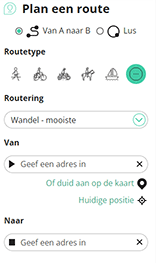There has been a church at the current site of the Thomaskirche at least since the 12th century. Foundations of a Romanesque building have been discovered in the choir and crossing of the current church.[1]:2
Between 1212 and 1222 the earlier structure became the church of the new St. Thomas Monastery (Stift) of the Augustinian order founded by Markgraf Dietrich von Meissen. This monastery later became the core of the University of Leipzig (founded in 1409).[1]:2
In 1217, The Minnesinger, or troubadour (see Minnesang), Heinrich von Morungen bequeathed to the church a relic of St. Thomas as he entered the order of canons after a trip to India.
In 1355, the Romanesque choir was changed to Gothic style. Following an inflow of wealth into Leipzig from the discovery of silver in the Erzgebirge, the Romanesque nave was demolished and replaced in 1482-96 by the current late-Gothic hall church.[1]:2
The current building was consecrated by Thilo of Trotha, the Bishop of Merseburg, on 10 April 1496. The reformer Martin Luther preached here on Pentecost Sunday in 1539. The monastic buildings were demolished in 1541 following the monastery's dissolution.
The current church tower was first built in 1537 and rebuilt in 1702. Chapels added in the 17th century and an ante-building along the northern front of the nave with two stairways were removed at the end of the 19th century.[1]:2
Statue of Johann Sebastian Bach at the Thomaskirche
Bach's grave beneath the floor of the choir (sanctuary) of the church
The composer Johann Sebastian Bach was choir director at St. Thomas Church from 1723 until his death in 1750 and taught at its affiliated school. A statue of Johann Sebastian Bach by the Leipzig sculptor Carl Seffner that stands next to the church was dedicated in 1908.[1]:3,5
On 12 May 1789, Wolfgang Amadeus Mozart played the organ here. In 1806, the church served as a munitions depot for the French army. During the Battle of Leipzig, the Thomaskirche was used as a military hospital.[1]:5
Richard Wagner was baptized here on 16 August 1813.[2] In 1828, he studied piano and counterpoint with the then Thomaskantor, Christian Th. Weinlig.[3][1]:4
Most of the Baroque internal trappings of the church known to Bach were removed in a Gothic revival renovation of 1884-9. Also from this period date the pulpit and the main portal in the west facade.[1]:2
On 4 December 1943, the tower was damaged in an Allied bombing raid on Leipzig, requiring repair. The authorities demolished the Johanneskirche, also damaged by bombs in 1943, in 1949 and the remains of Johann Sebastian Bach were moved from there to the Thomaskirche in 1950.
In the 20th century, sulfur emitted from nearby coal mines, and other pollutants in the atmospheric air caused the deterioration of exterior stonework and statuary, and even of interior Gothic paintings. In addition, the roof structure suffered from damage due to insects and moisture. For these reasons, the church was listed in the 2000 World Monuments Watch by the World Monuments Fund.[4] Repairs were swiftly undertaken with financial support from the Fund and from American Express.
Repairs on the church in 1961 to 1964 also attempted to emphasize the Gothic hall church character of the building. Another renovation followed in 1991.[1]:2-3
From 1993 to 2014, a 15th-century Gothic altar (originally in the Paulinerkirche, the church of the University of Leipzig, destroyed in 1968 by the Communist authorities) was located in the Thomaskirche. It was moved to the new St. Pauli church (2014) and replaced in 2016 with a Gothic-revival altar by Constantin Lipsius made in 1888, which had been removed in 1964.[5]
Mendelssohn statue
A statue of Felix Mendelssohn Bartholdy, who lived in Leipzig from 1835 until his death in 1847, was dedicated on 18 October 2008, when it was re-erected opposite the St. Thomas Church on the occasion of the year of his 200th birthday. The 6-meter (20 ft) statue depicts the former Gewandhaus Orchestra director and composer in bronze. Celebratory speeches were given by Kurt Masur, also a former Gewandhaus Orchestra director, and Burkhard Jung, mayor of Leipzig. The original statue designed by Werner Stein was first dedicated on 26 May 1892. It had been located on the east side of the Gewandhaus until 9 November 1936, when it was taken down by the Nazis because of the composer's Jewish background.
![]() | | Publiek | Engels
| | Publiek | Engels
Ontdek de mooiste en meest populaire routes in de buurt, zorgvuldig gebundeld in passende selecties.
Ontdek de mooiste en meest populaire bezienswaardigheden in de buurt, zorgvuldig gebundeld in passende selecties.
Met RouteYou kan je eenvoudig zelf aangepaste kaarten maken. Stippel je route uit, voeg waypoints of knooppunten toe, plan bezienswaardigheden en eet- en drinkgelegenheden in en deel alles met je familie en vrienden.
Routeplanner

<iframe src="https://plugin.routeyou.com/poiviewer/free/?language=nl&params.poi.id=3229190" width="100%" height="600" frameborder="0" allowfullscreen></iframe>
Probeer deze functionaliteit gratis met een RouteYou Plus-proefabonnement.
Als je al een dergelijke account hebt, meld je dan nu aan.
© 2006-2024 RouteYou - www.routeyou.com